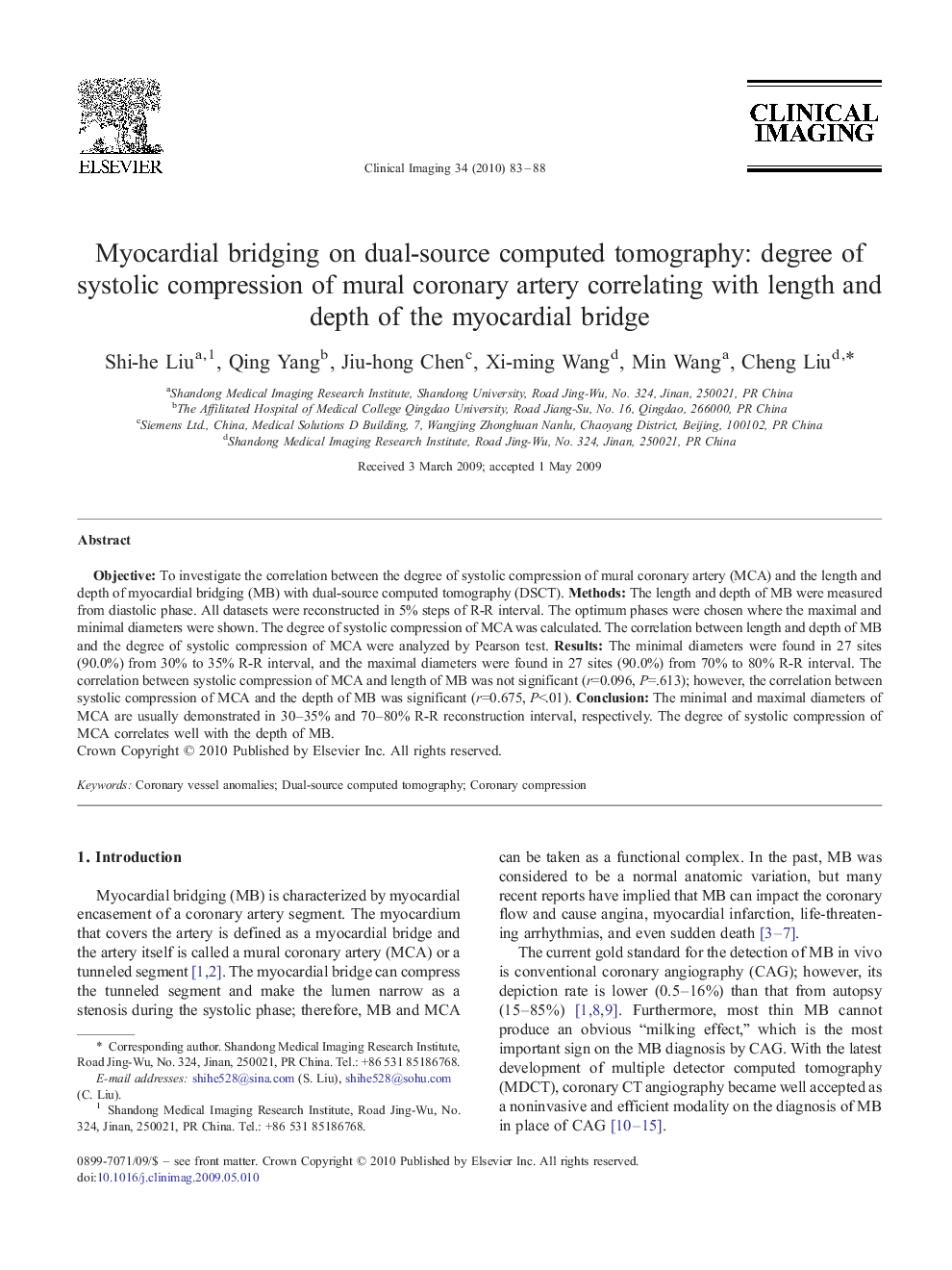| Article ID | Journal | Published Year | Pages | File Type |
|---|---|---|---|---|
| 4222111 | Clinical Imaging | 2010 | 6 Pages |
ObjectiveTo investigate the correlation between the degree of systolic compression of mural coronary artery (MCA) and the length and depth of myocardial bridging (MB) with dual-source computed tomography (DSCT).MethodsThe length and depth of MB were measured from diastolic phase. All datasets were reconstructed in 5% steps of R-R interval. The optimum phases were chosen where the maximal and minimal diameters were shown. The degree of systolic compression of MCA was calculated. The correlation between length and depth of MB and the degree of systolic compression of MCA were analyzed by Pearson test.ResultsThe minimal diameters were found in 27 sites (90.0%) from 30% to 35% R-R interval, and the maximal diameters were found in 27 sites (90.0%) from 70% to 80% R-R interval. The correlation between systolic compression of MCA and length of MB was not significant (r=0.096, P=.613); however, the correlation between systolic compression of MCA and the depth of MB was significant (r=0.675, P<.01).ConclusionThe minimal and maximal diameters of MCA are usually demonstrated in 30–35% and 70–80% R-R reconstruction interval, respectively. The degree of systolic compression of MCA correlates well with the depth of MB.
